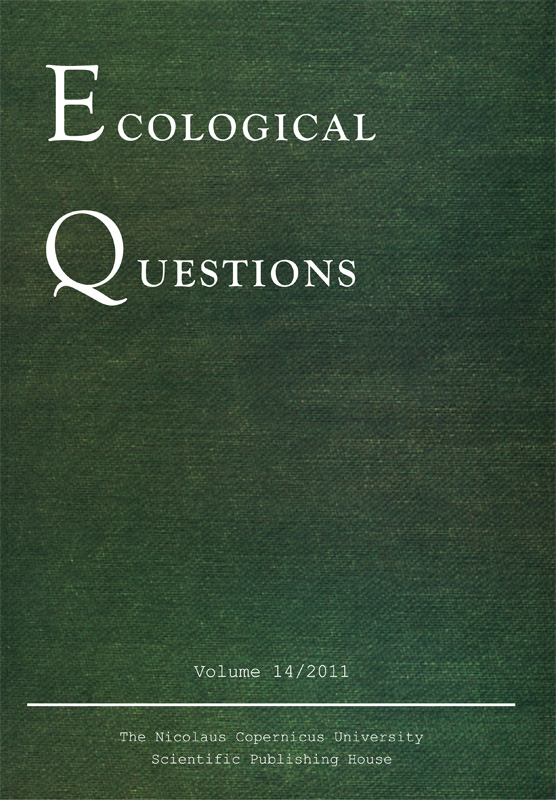Halophytes as components of lawns under different soil salinity and human impact in the health resort “Ciechocinek”
DOI:
https://doi.org/10.12775/v10090-011-0006-7Keywords
spa, green areas, salt production, diversity, halophytes, species composition, numerical classification, energy flow, emergy, ESIAbstract
The comparison was performed on the flora of lawns located in the vicinity of three brine concentration towers in the Spa Park in the town of Ciechocinek. It was found that a different level of saline water inflow into the soil and a different use of these lawns are the main causes of the observed differences in the number and the species composition of halophytes and glycophytes. The possibility of determining the differences in the intensity of human impact on the studied systems was discussed, as well as the value of the Environmental Sustainability Index was determined through emergy analysis. Energy flow diagrams were prepared for two basic greenery management methods and salt production, which best differentiates the flora of the studied lawns.References
Brown M. T. & Ulgiati S., 1997, Emergy-based indices and ratios to evaluate sustainability: monitoring economies and technology toward environmentally sound innovation, Ecological Engineering 9: 51–69.
Handziuk J., 1988, Roślinność rezerwatu halofitów „Ciechocinek” i trawników przytężniowych, praca magisterska [Vegetation in the reserve of halophytes “Ciechocinek” and the lawns near the graduation towers, Master’s thesis, NCU, Toruń, in Polish], UMK, Toruń.
Marcykiewicz J., 2005, Roślinność trawników przytężniowych w Ciechocinku, praca magisterska [Vegetation of the lawns near the graduation towers in Ciechocinek, Master’s thesis, NCU, Toruń, in Polish], UMK, Toruń.
Nienartowicz A., 2007, Active protection of halophytes: Assessment of the human intervention range using the emergy analysis and indicators of sustainable development, [in:] M. T. Brown et al. (eds.), Emergy Synthesis 4, Theory and Applications of the Emergy Methodology, University of Florida, Gainesville: 8.1–8.12.
Odum H. T., 1996, Environmental Accounting: EMERGY and Environmental Decision Making, John Wiley & Sons, Inc., New York–Chichester–Brisbane–Toronto–Singapore.
Wilkoń-Michalska J., 1963, Halofity Kujaw [Halophytes of Kujawy, in Polish with English summary], Stud. Soc., Toruń.
Wilkoń-Michalska J., 1970, Zmiany sukcesyjne w rezerwacie halofitów „Ciechocinek” w latach 1954–1965 [Plant succession in the halophyte reserve „Ciechocinek” between 1954–1965, in Polish with English summary], Ochrona Przyrody 35: 25–51.
Downloads
Published
How to Cite
Issue
Section
Stats
Number of views and downloads: 565
Number of citations: 0



